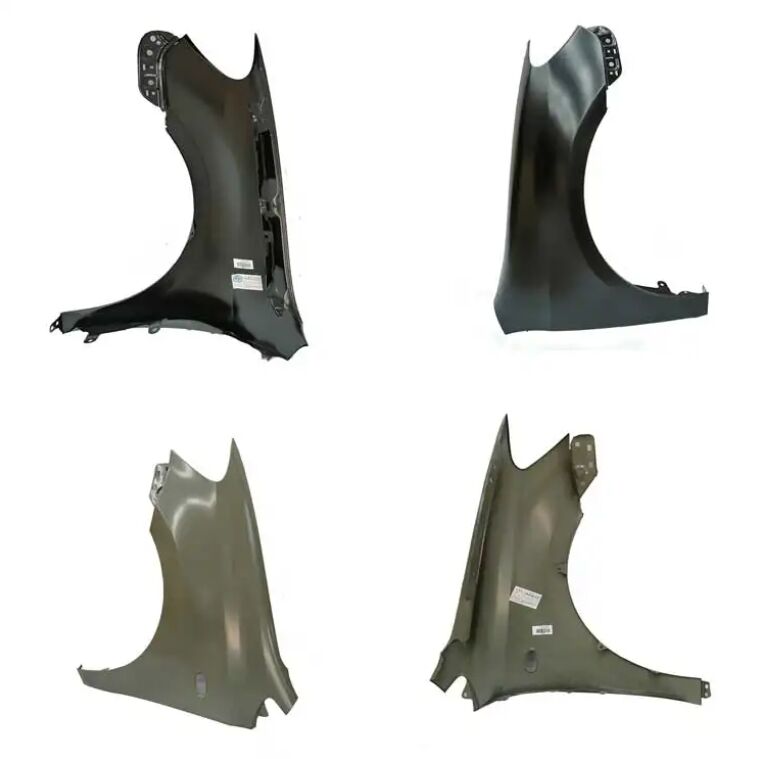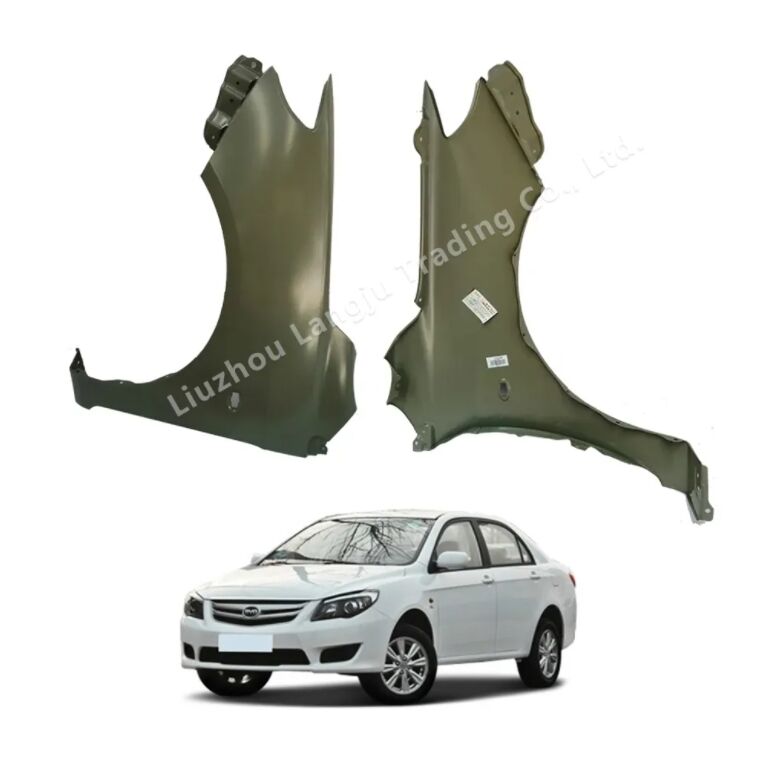The Essential Role of Rear Fender Protection in Modern Vehicles
Rear fenders serve as crucial protective components in modern vehicles, acting as the first line of defense against various road hazards. These automotive elements have evolved significantly from their early designs in the first automobiles to become sophisticated protective features that combine functionality with aesthetics. Understanding how rear fenders work to protect your vehicle can help you appreciate their importance and ensure proper maintenance for optimal performance.
Understanding the Core Functions of Rear Fenders
Debris Protection Mechanics
Rear fenders are engineered to deflect and redirect various types of road debris away from your vehicle. As your car moves along the road, the tires inevitably kick up rocks, gravel, sticks, and other potentially damaging materials. The rear fenders create a protective barrier that prevents these projectiles from damaging your vehicle's body panels or being thrown toward following vehicles.
The curved design of rear fenders isn't just for aesthetics - it's carefully calculated to create optimal aerodynamic flow while maximizing protection. This curvature helps channel debris downward and away from the vehicle, reducing the risk of paint chips, dents, and other damage that could compromise your car's appearance and value.
Water Management System
One of the most important functions of rear fenders is their role in water management during wet conditions. When driving through rain, puddles, or snow, your vehicle's tires can spray significant amounts of water upward and outward. Rear fenders are designed to contain and redirect this spray, preventing it from obscuring the vision of other drivers or causing hydroplaning conditions.
The engineering behind rear fenders includes specific contours and angles that help manage water flow efficiently. This design ensures that water is directed away from critical components while maintaining the vehicle's stability and safety in wet conditions. Modern rear fenders often incorporate additional features like splash guards and liners to enhance their water management capabilities.

Structural Design and Material Innovation
Advanced Material Composition
Modern rear fenders are constructed using sophisticated materials that balance durability, weight, and cost-effectiveness. High-grade thermoplastics, reinforced polymers, and advanced composites are commonly used in today's vehicles. These materials offer excellent impact resistance while remaining lightweight enough to contribute to overall fuel efficiency.
The development of these materials has led to rear fenders that can withstand extreme temperature variations, resist corrosion, and maintain their structural integrity over many years of service. Manufacturers continue to research and implement new material technologies to enhance both protection and sustainability.
Aerodynamic Integration
The design of rear fenders plays a significant role in a vehicle's overall aerodynamic performance. Modern automotive engineers use computational fluid dynamics to optimize fender shapes that reduce air resistance while maintaining protective capabilities. This careful balance helps improve fuel efficiency without compromising the primary protective functions.
Integration with other body components ensures that rear fenders contribute to the vehicle's overall aerodynamic profile. This holistic approach to design helps reduce wind noise, improve stability at higher speeds, and enhance the vehicle's overall performance characteristics.
Maintenance and Enhancement Options
Regular Inspection and Care
Maintaining rear fenders is essential for ensuring their continued effectiveness in protecting your vehicle. Regular inspections can help identify any damage, loose components, or wear that might compromise their protective capabilities. This includes checking for proper alignment, secure mounting, and the condition of any additional protective elements like mud flaps or splash guards.
Cleaning rear fenders regularly helps prevent the accumulation of road grime and corrosive materials that could lead to premature deterioration. Special attention should be paid to the areas where fenders meet other body panels, as these joints can be prone to collecting debris and moisture.
Aftermarket Modifications
The aftermarket industry offers various options for enhancing rear fender protection. These range from additional splash guards and mud flaps to extended fender flares for vehicles that see off-road use or require extra coverage for wider tires. When considering modifications, it's important to choose options that maintain the original engineering principles while providing the desired additional protection.
Professional installation of aftermarket components ensures proper fitment and maintains the intended functionality of your vehicle's rear fenders. This includes proper sealing and alignment to prevent water intrusion and maintain aerodynamic efficiency.
Environmental Impact and Future Developments
Sustainable Materials and Manufacturing
The automotive industry is increasingly focusing on environmental sustainability in rear fender production. This includes the use of recycled materials, development of biodegradable composites, and implementation of more efficient manufacturing processes. These advances help reduce the environmental impact while maintaining or improving protective capabilities.
Future developments in rear fender technology are likely to include smart materials that can adapt to different conditions and self-healing surfaces that can repair minor damage automatically. These innovations will further enhance the protective capabilities while reducing maintenance requirements.
Integration with Smart Vehicle Systems
As vehicles become more technologically advanced, rear fenders are being integrated with various smart systems. This includes sensors for obstacle detection, cameras for parking assistance, and aerodynamic elements that can adjust based on driving conditions. These developments represent the next evolution in vehicle protection and safety.
The integration of these technologies requires careful consideration of material choices and design elements to ensure all components work together effectively while maintaining the core protective functions of the rear fenders.
Frequently Asked Questions
Can I drive safely if my rear fender is damaged?
While minor damage might not immediately affect vehicle safety, driving with significantly damaged rear fenders can lead to reduced protection against debris and water spray. It's recommended to repair or replace damaged fenders promptly to maintain optimal vehicle protection and safety.
How often should rear fenders be inspected?
Regular inspections should be performed at least every six months or after any significant impact or damage. This includes checking for secure mounting, proper alignment, and signs of wear or deterioration that could affect their protective capabilities.
Are aftermarket fender extensions legal?
The legality of aftermarket fender modifications varies by jurisdiction. Generally, extensions must not exceed certain width limits and must effectively contain tire spray and debris. It's important to check local regulations and ensure any modifications comply with relevant safety standards.

